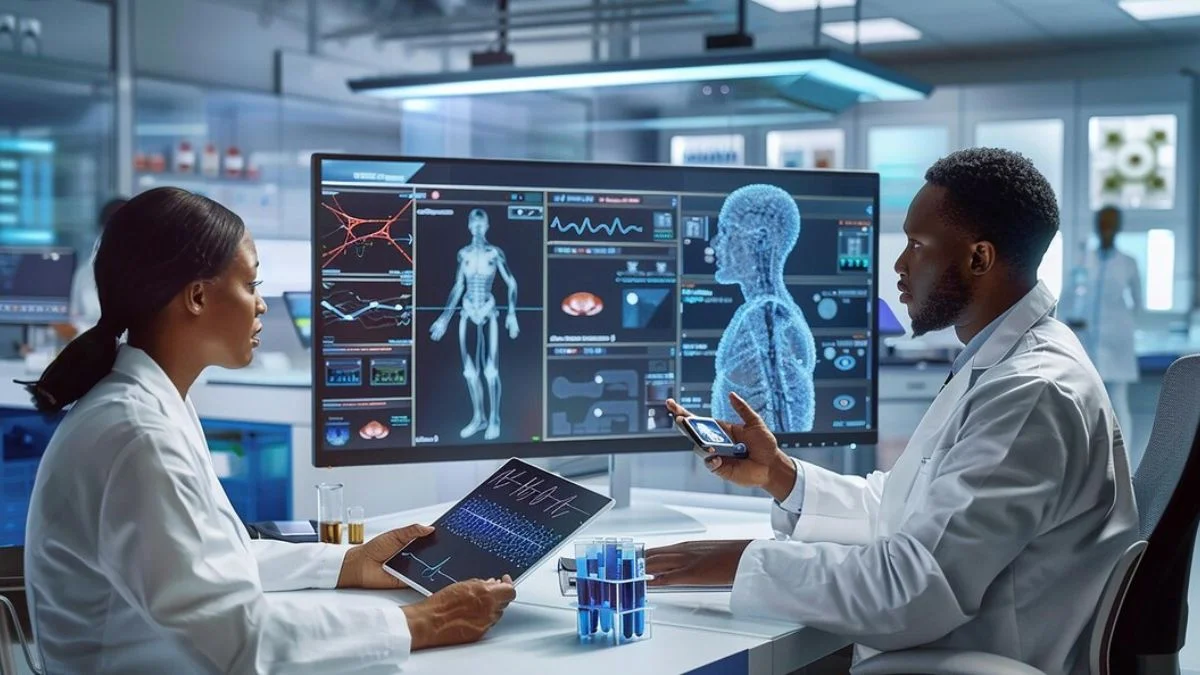Artificial Intelligence (AI) is transforming healthcare, especially in medical imaging, by enhancing diagnostic accuracy and efficiency. By analyzing large amounts of imaging data, AI algorithms have been developed to assist radiologists in reviewing patient scans, identifying potential issues, and improving diagnostic accuracy.
Understanding these developments helps us see how AI not only assists in diagnostics but also offers predictive insights, enabling better clinical decisions. The journey of AI in this field is marked by significant milestones, each pushing the boundaries of what is possible in medical technology.
Enhancing Diagnostic Accuracy
AI’s ability to detect and quantify various clinical conditions has shown promising results. Computer-aided diagnostics, which use AI to analyze images, have demonstrated high accuracy in identifying small radiographic abnormalities.
The Early Days of Medical Imaging
The Advent of Medical Imaging Technology
Medical imaging technologies like X-rays, CT scans, MRIs, and ultrasounds revolutionized healthcare by providing non-invasive ways to view the human body. However, early imaging faced challenges such as low resolution and manual interpretation, necessitating more advanced solutions.
Challenges and Limitations of Early Techniques
Initial limitations, such as poor image quality and high radiation exposure, made accurate diagnoses challenging. These issues highlighted the need for enhanced techniques, leading to the integration of AI.
Introduction of AI in Medical Imaging
Artificial Intelligence in Healthcare
Artificial intelligence is a word used to describe how technology, including computer systems, may duplicate human intelligence processes. In healthcare, AI involves the use of algorithms and software to analyze complex medical data, often surpassing human capabilities.
How AI Began to Integrate with Medical Imaging
AI’s integration into medical imaging started with the development of computer-aided detection (CAD) systems in the early 2000s. These systems helped radiologists identify abnormalities more accurately by highlighting areas of concern. Over time, AI technologies like deep learning and neural networks began to improve image recognition, making diagnostic processes faster and more reliable.
Techniques Revolutionizing Medical Imaging
Machine learning (ML) and deep learning (DL) are core to AI advancements in medical imaging. These technologies enable precise pattern recognition and anomaly detection, which improves diagnostic accuracy.
Computer vision allows AI to interpret visual data, making it invaluable for identifying complex patterns in medical images and detecting diseases.
Current Applications of AI in Medical Imaging
1. Automated Diagnosis and Image Analysis
AI algorithms are being widely used to automate the diagnosis of diseases such as breast cancer, lung nodules, and brain tumors from medical images. These systems assist radiologists by providing second opinions and reducing diagnostic errors.
2. Predictive Analytics and Risk Assessment
AI enables predictive analytics in medical imaging by analyzing historical patient data to predict disease progression and potential complications. This can significantly improve patient outcomes by enabling early intervention.
3. AI-Powered Workflow Optimization
AI is not only revolutionizing diagnostics but also enhancing the efficiency of radiology departments. AI tools help streamline workflows by prioritizing urgent cases, reducing radiologists’ workload, and minimizing burnout.
Challenges and Ethical Considerations
AI’s reliance on large datasets raises concerns about patient data privacy and security, necessitating compliance with regulations like HIPAA.
AI models can be biased if trained on non-representative data, potentially leading to inaccurate diagnoses. It is necessary to ensure training data that is neutral and different.
Expert Insights and Future Outlook
Experts agree that AI augments but does not replace radiologists. AI serves as a tool that enhances diagnostic capabilities and efficiency.
Advancements in Generative AI for Image Synthesis
Generative AI can create synthetic medical images for training, reducing the need for vast annotated datasets and enhancing AI model robustness. For more on Generative AI in Healthcare, read on the site. Combined learning allows AI models to be trained across decentralized data sources without sharing sensitive patient data, maintaining privacy.
Applications and Benefits
Improving Accuracy and Speed of Diagnoses
AI algorithms reduce the time needed for image analysis and increase diagnostic accuracy, benefiting both patients and healthcare providers.
Reducing Radiologist Burnout and Increasing Efficiency
By automating repetitive tasks and providing decision support, AI helps reduce radiologist burnout and improves overall efficiency in radiology departments.
Enhancing Patient Results and Experience
AI not only speeds up diagnosis but also improves the patient experience by providing faster and more accurate results, leading to timely and effective treatment.
Conclusion
The evolution of AI in medical imaging is reshaping the landscape of healthcare, enhancing diagnostic accuracy, efficiency, and patient outcomes. As AI technology continues to advance, the integration of AI in medical imaging is set to grow, offering even more promising solutions for the future.
If you liked this article, click here for more.









